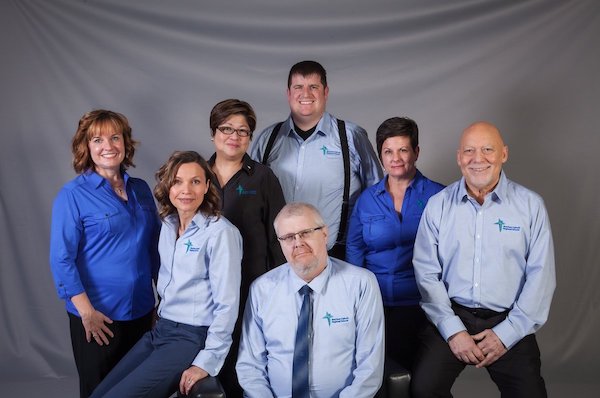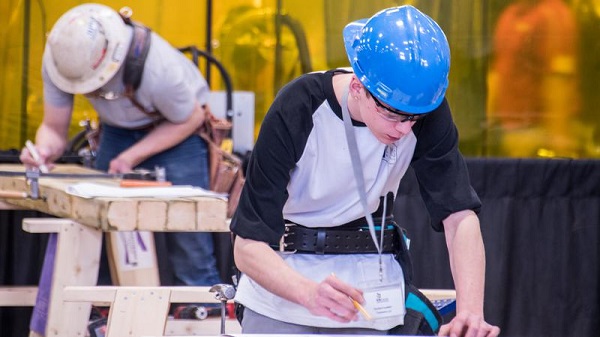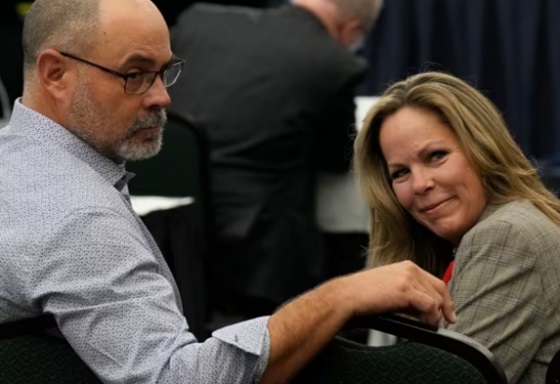Education
Negotiations between ATA and Red Deer Catholic Schools go public

It may be a simple misunderstanding, but it also may be a negotiating tactic. Either way, the Alberta Teachers Association has issued a news release claiming Red Deer Catholic Regional Schools may be considering a lockout. Less than a day after that release came out, Red Deer Catholic Schools issued its own release to clearly explain the situation to the public as they see it.
Here are the two releases:
From the Alberta Teachers Association
Teachers Worried about Red Deer Catholic Moving towards Lockout
Recent actions to sidestep the third-party independent mediator in Red Deer Catholic (RDCRS) teacher negotiations are a troubling sign of things to come. RDCRS board negotiators have taken the unusual step of asking the mediator to remove herself from bargaining even though two dates for mediation were already scheduled.
By asking the mediator to write out, the board has kicked off a two-week cooling off period that lapses on March 12, and opens the door to the board locking out teachers.
“Our desire has always been to reach an agreement without a disruption to schools. Fifty-eight of 61 school divisions have a deal, so we know an agreement is very much achievable if we just use those other settlements as a guide. We strongly believe the mediator will be helpful in getting the parties to a settlement.”
—Sara Lambert, president of Red Deer Catholic Local No 80
While teacher representatives have agreed to bargain on the scheduled mediation dates, they are worried that the board, absent the mediator, is planning to waste time and thwart a settlement. Bargaining will be held on March 7, but teachers have only agreed to continue meeting on March 8 if it is clear that the board is prepared to make meaningful progress on the first day.
“If the board intends to get down to the business of bargaining, we can get a deal done this week. That is what we want. However, if it looks like the board is wasting our time, playing games and ignoring the trend set across the rest of the province, there is no point continuing.”
—Sara Lambert, president of Red Deer Catholic Local No 80
Red Deer Catholic teachers are looking for a settlement that reflects the agreements reached in other jurisdictions, which includes improvements on issues related to substitute teachers and school administrators. The solutions being proposed are low cost and reasonable.
Collective bargaining for teachers in Alberta is a two-phase process where matters of significant cost and broad impact are negotiated at a central table, followed by local negotiations between individual school divisions and ATA bargaining units on other more locally specific matters.
The Alberta Teachers’ Association is the professional association of teachers in Alberta and acts as the bargaining agent for all teachers employed in public, separate and francophone school divisions. The Red Deer Catholic School Division employs approximately 700 contracted and substitute teachers in Catholic schools in Red Deer, Blackfalds, Sylvan Lake, Rocky Mountain House, Innisfail and Olds.
Reply from Red Deer Catholic Regional Schools
Red Deer Catholic Regional Schools Reacts to Recent ATA Media Release
For immediate release – March 6, 2024
The Alberta Teachers’ Association (ATA) announced, in a surprise media release late yesterday, that Red Deer Catholic Regional Schools (RDCRS) is sidestepping “the third-party independent mediator … in teacher negotiations”. Nothing could be further from the truth.
On February 26, 2024, in an email from the mediator to both the ATA and RDCRS, the mediator stated,
“Further to my phone calls with each of you on Friday, I understand that the Employer reviewed the “binary choice” in Sean’s email of February 15, 2024, and agreed the next step should be for the mediator to write out and let the cooling off period begin. However, I understand the Employer is willing to meet with the ATA, without the mediator, on March 7 and 8, 2024 during the hours previously discussed (evening and day).”
The mediator further stated in that email correspondence,
“I have decided to not issue recommended terms of settlement at this time as I feel the parties are too far apart in their current positions. Attached is the letter confirming this decision”.
The email the mediator is referring to on February 15, 2024, came from the ATA chief negotiator, Sean Brown, in which he referred to a “binary choice” as follows,
“Given the results of the meeting and the sentiments shared by members, I believe the next step is a binary choice:
-
The employer bargaining team returns to the table and listens to its teachers. Furthermore, that the employer be prepared to move on the items that members need. (Our preferred option), or
-
The mediator will need to write out and the two-week cooling off period will commence.
We hope to hear back that the employer will return to the table. If not, then they will leave teachers with few options.”
Vice Chair Dorraine Lonsdale states, “RDCRS believes that factual reporting of events, activities, and matters pertinent to our local teacher negotiations with the ATA is now necessary for our communities to understand what is involved in these local teacher negotiations. To this end, RDCRS has opened a section of our website to report to our communities on our local teacher negotiations. Information will be shared on a regular basis as we continue to negotiate with the ATA.”
The bargaining team for RDCRS will attend the scheduled meetings on March 7 and 8, 2024 and bargain with the ATA to reach an agreement that is mutually acceptable to both parties.
“It is the intention of RDCRS to continue a principled and respectful approach while bargaining the local items tabled by both parties. The school division highly values its teachers and in addition, we are responsible to students, parents, and our communities,” Vice Chair Lonsdale continues. “RDCRS has a duty to preserve our programs and services, to manage our complex education system and to be financially accountable for our decisions. These three pillars extend also to our bargaining of collective agreements affecting our employees. RDCRS takes these responsibilities seriously, and these responsibilities always remain an important part of our considerations.”
The Division is committed to serving children and parents with a complete offering of learning opportunities delivered within the context of Catholic teachings and within the means of the Division.
Red Deer Catholic Regional Schools serves over 10,650 students in 21 schools in Red Deer, Sylvan Lake, Rocky Mountain House, Innisfail, Blackfalds and Olds. It also supports the learning of over 850 students in a Home Education Program. The Division is committed to serving children and parents with a complete offering of learning opportunities delivered within the context of Catholic teachings and within the means of the Division.
Education
Our Kids Are Struggling To Read. Phonics Is The Easy Fix

From the Frontier Centre for Public Policy
One Manitoba school division is proving phonics works
If students don’t learn how to read in school, not much else that happens there is going to matter.
This might be a harsh way of putting it, but it’s the truth. Being unable to read makes it nearly impossible to function in society. Reading is foundational to everything, even mathematics.
That’s why Canadians across the country should be paying attention to what’s happening in Manitoba’s Evergreen School Division. Located in the Interlake region, including communities like Gimli, Arborg and Winnipeg Beach, Evergreen has completely overhauled its approach to reading instruction—and the early results are promising.
Instead of continuing with costly and ineffective methods like Reading Recovery and balanced literacy, Evergreen has adopted a structured literacy approach, putting phonics back at the centre of reading instruction.
Direct and explicit phonics instruction teaches students how to sound out the letters in words. Rather than guessing words from pictures or context, children are taught to decode the language itself. It’s simple, evidence-based, and long overdue.
In just one year, Evergreen schools saw measurable gains. A research firm evaluating the program found that five per cent more kindergarten to Grade 6 students were reading at grade level than the previous year. For a single year of change, that’s a significant improvement.
This should not be surprising. The science behind phonics instruction has been clear for decades. In the 1960s, Dr. Jeanne Chall, director of the Harvard Reading Laboratory, conducted extensive research into reading methods and concluded that systematic phonics instruction produces the strongest results.
Today, this evidence-based method is often referred to as the “science of reading” because the evidence overwhelmingly supports its effectiveness. While debates continue in many areas of education, this one is largely settled. Students need to be explicitly taught how to read using phonics—and the earlier, the better.
Yet Evergreen stands nearly alone. Manitoba’s Department of Education does not mandate phonics in its public schools. In fact, it largely avoids taking a stance on the issue at all. This silence is a disservice to students—and it’s a missed opportunity for genuine reform.
At the recent Manitoba School Boards Association convention, Evergreen trustees succeeded in passing an emergency motion calling on the association to lobby education faculties to ensure that new teachers are trained in systematic phonics instruction. It’s a critical first step—and one that should be replicated in every province.
It’s a travesty that the most effective reading method isn’t even taught in many teacher education programs. If new teachers aren’t trained in phonics, they’ll struggle to teach their students how to read—and the cycle of failure will continue.
Imagine what could happen if every province implemented structured literacy from the start of Grade 1. Students would become strong readers earlier, be better equipped for all other subjects, and experience greater success throughout school. Early literacy is a foundation for lifelong learning.
Evergreen School Division deserves credit for following the evidence and prioritizing real results over educational trends. But it shouldn’t be alone in this.
If provinces across Canada want to raise literacy rates and give every child a fair shot at academic success, they need to follow Evergreen’s lead—and they need to do it now.
All students deserve to learn how to read.
Michael Zwaagstra is a public high school teacher and a senior fellow at the Frontier Centre for Public Policy.
Alberta
Province pumping $100 million into Collegiates and Dual-Credit hands-on learning programs

Alberta’s government is helping students discover their skills and interests today, to help them find careers for tomorrow.
If passed, Budget 2025 will provide more than $100 million over three years for school boards to grow career education programs, including funding for more collegiate and dual-credit programs across Alberta.
“We are working to set students up for success by strengthening job-focused education. This money is helping schools partner with businesses, universities and colleges to create programs that will help students hit the ground running after they graduate.”
Career education helps students gain credits towards graduation while earning hands-on experience in fields like the trades, computer programming, health care, agriculture, culinary arts and more. These career education programs support a strong economy by helping students learn the skills they need to get in-demand jobs.
Collegiate schools
Collegiate schools work with businesses, universities and colleges to offer classes that give students pathways to education and careers in the job of their choice. There are 12 collegiate schools in Alberta, offering many different types of programming for grades 7-12, including aviation, graphic design, trades and more.
If passed, Budget 2025 provides more than $21 million to school boards to help fund special classrooms like carpentry workshops, film and media rooms, science laboratories, heavy equipment simulators and aircraft hangars. Another $6 million is being invested to support the start-up costs for new collegiate schools.
Dual-credit programs
Budget 2025, if passed, also provides $4.6 million in 2025/26 to start new or improve existing dual-credit programs. In partnership with universities and colleges, dual-credit programs give students a head start on rewarding careers by allowing them to earn high-school and post-secondary credits at the same time. Of the $4.6 million, $550,000 is being provided by Alberta Seniors, Community and Social Services for new and improved dual-credit health care aide programs.
“Health care aides play a critical role in ensuring Albertans receive the continuing care services they need to maintain their health, independence and quality of life. Our investments into career pathways for health care aides will provide opportunities for young Albertans to develop the skills they need to build a rewarding career in Alberta’s continuing care workforce.”
Another $1.4 million is being invested to support students participating in off-campus career education programs through CAREERS. This non-profit connects students to jobs in high-demand fields, such as the trades, technology, health, forestry and agriculture.
“Investments in collegiate and dual-credit programming are significant for Calgary Catholic as they further strengthen our collegiate and dual-credit programming. This programming will open opportunities for our students and help them to realize their full potential.”
“Before Fusion Collegiate, I felt lost and wasn’t really sure what to do after high school. Thanks to its career-focused learning and the opportunities through Fusion and The Educational Partnership Foundation, I’m now working as a first-year apprentice plumber with Mr. Rooter. The hands-on trades training, high school credits, safety certifications, and real-world skills I picked up completely changed my life. I’m excited about where my career is headed and really thankful for the support that helped me get here.”
Budget 2025 is meeting the challenge faced by Alberta communities with continued investments in education and health, lower taxes for families and a focus on the economy.
Quick facts
- If passed, Budget 2025 invests $102.4 million over three years to provide sustainable, predictable career education funding, and to increase access to career education for Alberta students.
- This includes $8.4 million over 2026-27 and 2027-28 to raise awareness among students and families of career education programs and pathways available to Alberta students.
- Career education in Alberta includes career and technology courses, Career and Life Management (CALM), dual-credit courses, collegiate schools, apprenticeships and off-campus education programming.
- Since 2013, more than 95,000 high school students participated in at least one dual–credit course.
- In spring 2025, Alberta Education will engage with education partners on best practices to bring more career education opportunities to students.
- Since 2022, education partners and almost 5,000 Albertans have provided their feedback on career education and workforce needs.
Related information
-

 Business2 days ago
Business2 days agoB.C. Credit Downgrade Signals Deepening Fiscal Trouble
-

 2025 Federal Election2 days ago
2025 Federal Election2 days agoHighly touted policies the Liberal government didn’t actually implement
-

 Freedom Convoy1 day ago
Freedom Convoy1 day agoFreedom Convoy leaders Tamara Lich, Chris Barber found guilty of mischief
-

 Canadian Energy Centre2 days ago
Canadian Energy Centre2 days agoSaskatchewan Indigenous leaders urging need for access to natural gas
-

 COVID-191 day ago
COVID-191 day agoTrump’s new NIH head fires top Fauci allies and COVID shot promoters, including Fauci’s wife
-

 Business2 days ago
Business2 days agoCalifornia planning to double film tax credits amid industry decline
-

 2025 Federal Election1 day ago
2025 Federal Election1 day agoWill Four More Years Of Liberals Prove The West’s Tipping Point?
-

 Courageous Discourse2 days ago
Courageous Discourse2 days agoEurope Had 127,350 Cases of Measles in 2024





